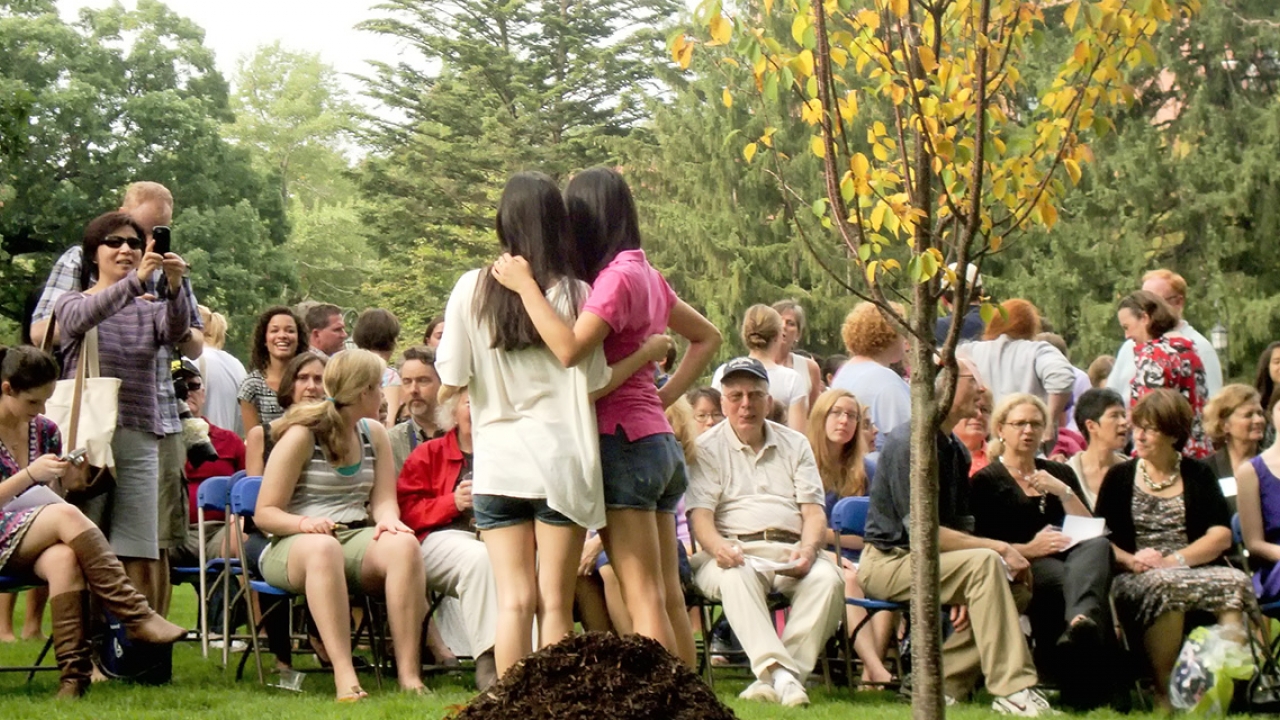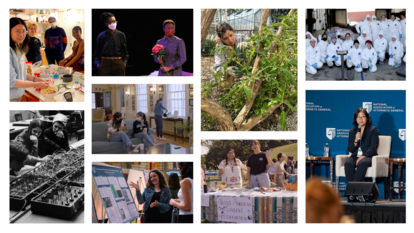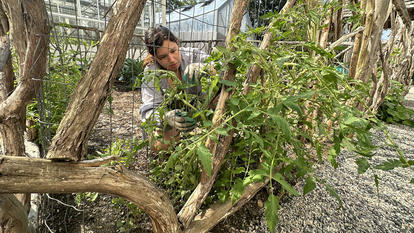
A Digital Map Celebrates a Wellesley Tradition: Class Trees
Every year since 1879, Wellesley’s sophomore class has planted a communal tree to convey the students’ connection to Wellesley. In addition to being environmental building blocks, they enhance the landscape with a tapestry of color.
Kristine Meader ’21 has admired Wellesley’s class trees since she arrived on campus from Michigan. “As I walked around campus my first two years, I always looked for the stone on the ground that designated the class tree,” said Meader, who is double majoring in environmental studies and Chinese language and culture.
Meader’s fondness for Wellesley’s trees inspired her to create an interactive map that provides the location of almost every class tree on campus as well as information about their contribution to carbon sequestration, their possible medicinal uses or edible properties, or tree-related quotes from Wellesley students, alumnae, faculty, and staff.
Meader started the project during her internship with the Paulson Ecology of Place Initiative. Using a tree guide from the Wellesley College Archives and with additional help from the College’s landscaping crew, she found and identified 96 class trees. “I walked around campus in the general areas where trees were planted and looked for any tree with a stone next to it,” she said. “I didn’t find every stone, so I’m guessing that they were moved somehow over the years.”
Her map is an aerial image of the campus with individual trees marked by an icon. When a user clicks the icon, a small box appears with a blurb that gives the class year, the tree species, its location, its diameter, and a personal reflection or an interesting fact about the tree.
One alumna commented on the ginkgo tree the class of 1962 planted alongside the path that leads to the Science Center: “No doubt trees are critical for the environment…but they are also instrumental in producing a calming and centering effect in humans. A walk in the woods does wonders for one’s mental health.”
Information on the Colorado spruce planted by the class of 1953 near the side entrance to the campus police parking lot contained details about its medicinal value. “Spruce shoots can be used in a tea to help soothe a sore throat or cough,” it reads. “It will act as an expectorant, something that can discharge phlegm/fluid, and a diaphoretic, something that causes sweating and therefore cooling.”
Meader’s map also includes each tree’s capacity to sequester heat-trapping carbon dioxide, information she obtained by processing field data through i-Tree Eco software, which produces a measure of the amount of carbon sequestered annually by individual trees and estimates the yearly economic value of sequestration.
“Trees are a natural climate solution when restored and protected that transform carbon dioxide into tree biomass through photosynthesis,” said Suzanne Langridge, director of the Paulson Initiative. “This incredible natural climate solution counteracts the emission of carbon dioxide and can even be considered in economic terms as the damage avoided from climate change.”
Meader’s class planted a sugar maple at the edge of Munger Meadow. Its blurb reads: “Maples are best known for being the source of maple syrup. Sugar maples are most popular in commercial syrup production, but sap, which contains B vitamins, calcium, and phosphorus, can be collected from any maple for homemade syrups.”



